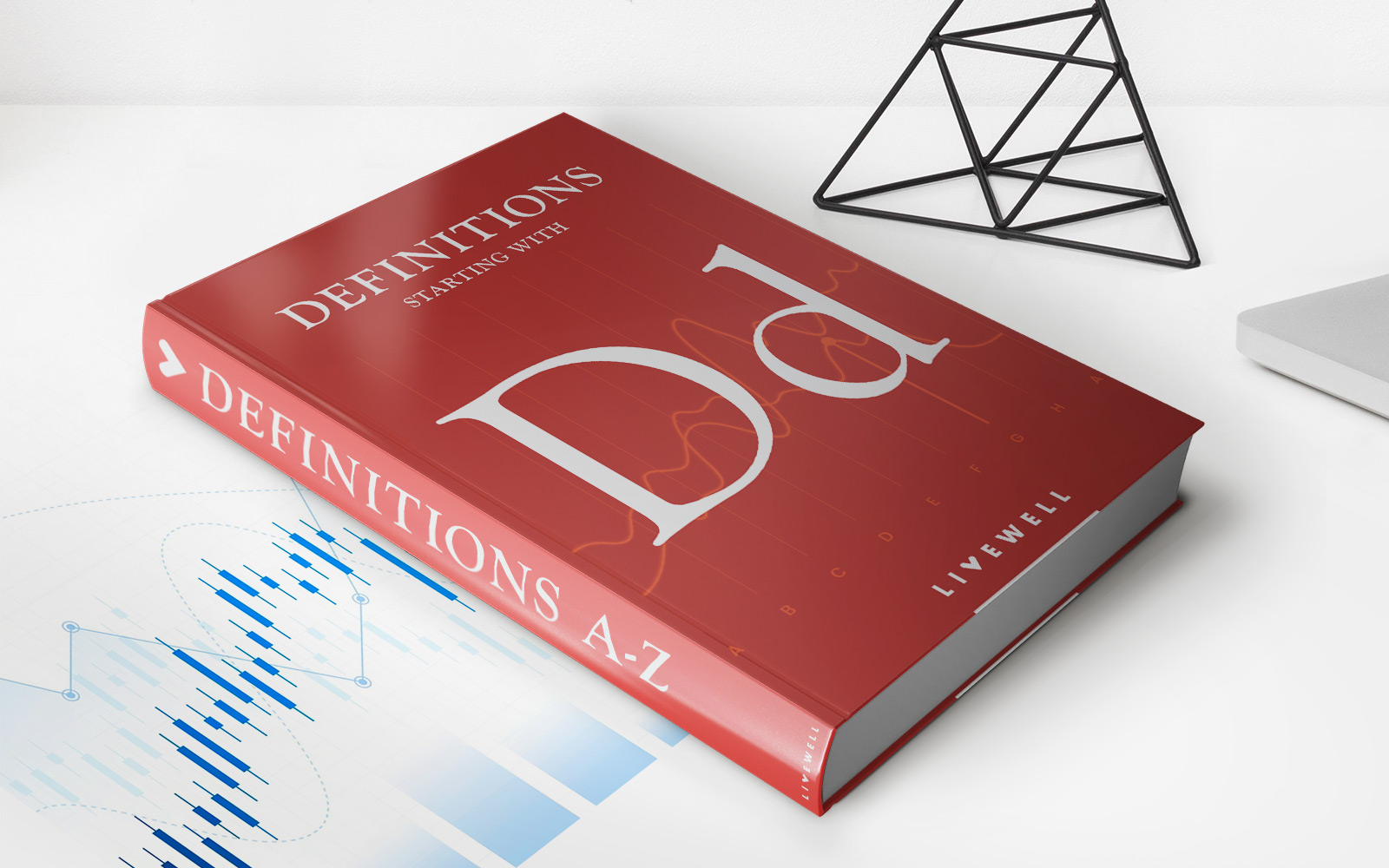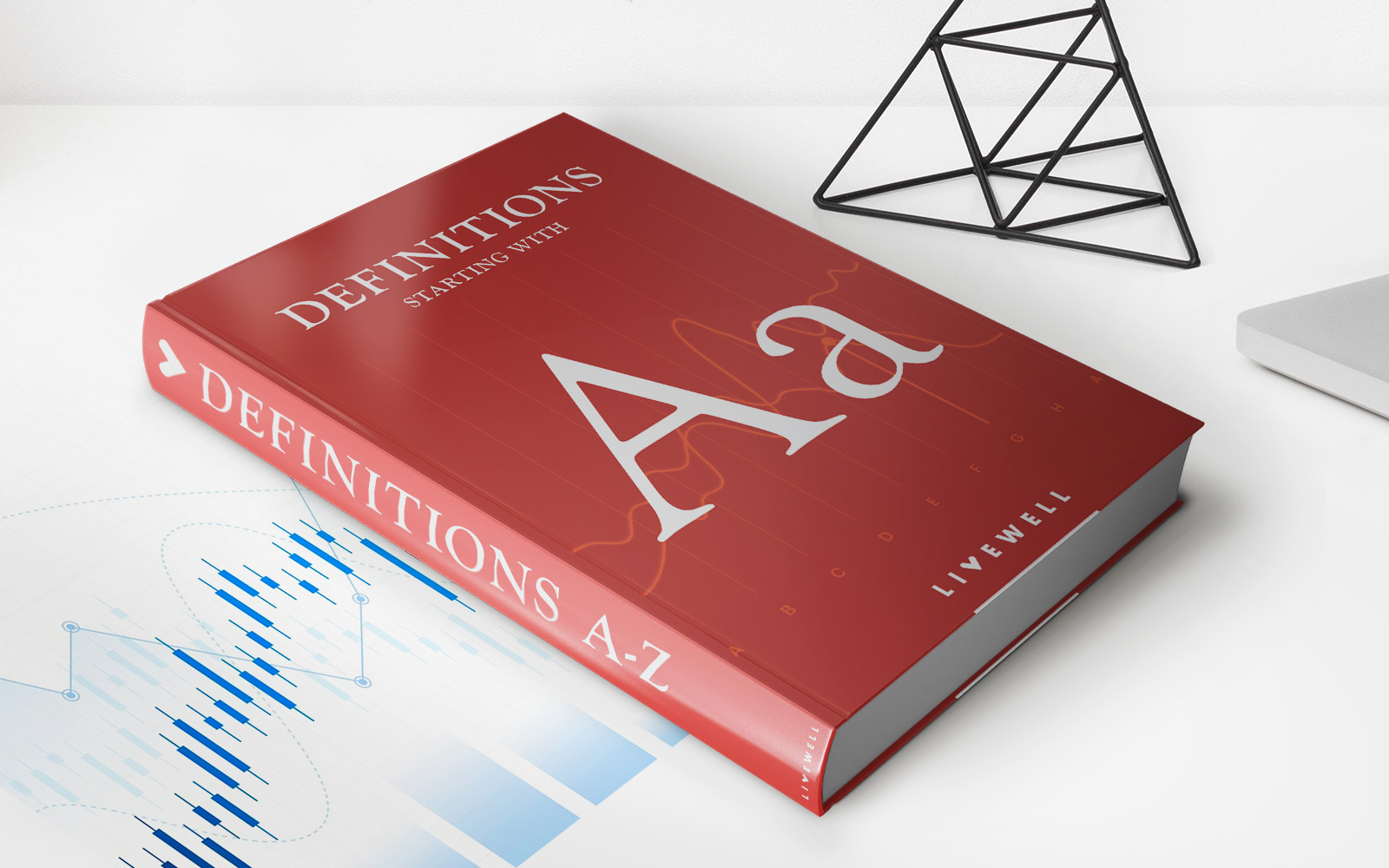Home>Finance>What Is The Grace Period Banks Allow Payments After It’s Due?


Finance
What Is The Grace Period Banks Allow Payments After It’s Due?
Published: February 20, 2024
Discover the grace period for late payments allowed by banks and how it impacts your finances. Learn about managing payments after their due date in the finance industry.
(Many of the links in this article redirect to a specific reviewed product. Your purchase of these products through affiliate links helps to generate commission for LiveWell, at no extra cost. Learn more)
Table of Contents
- Understanding the Grace Period in Banking
- Exploring the Dynamics of Grace Periods
- Unraveling the Mechanisms of Grace Periods
- Unlocking the Advantages of Grace Periods
- Understanding the Caveats of Grace Period Utilization
- Optimizing the Utilization of Grace Periods
- Navigating Financial Responsibilities with Grace and Prudence
Introduction
Understanding the Grace Period in Banking
In the realm of personal finance, navigating the intricacies of credit card payments, loan repayments, and other financial obligations can be a challenging undertaking. One concept that frequently surfaces in this landscape is the "grace period." This period offers individuals a window of time beyond the due date during which they can make payments without incurring late fees or damaging their credit score. Understanding the dynamics of grace periods is crucial for anyone seeking to manage their finances effectively and avoid unnecessary penalties.
The grace period is a provision that allows borrowers to make payments after the due date without facing adverse consequences. This concept is commonly associated with credit cards, where it pertains to the period between the end of a billing cycle and the due date for the subsequent payment. During this interval, cardholders have the opportunity to settle their outstanding balance without incurring interest charges. It's important to note that not all credit cards offer a grace period, and the specifics can vary based on the issuer and the terms of the card agreement.
Moreover, the concept of grace periods extends beyond credit cards and is also relevant in the context of loans, such as mortgages and student loans. In these scenarios, the grace period serves as a buffer, allowing borrowers to submit their payments after the due date without facing penalties. This aspect is particularly pertinent for individuals managing multiple financial responsibilities, as it provides a degree of flexibility and alleviates the immediate repercussions of missing a payment deadline.
Understanding the nuances of grace periods is essential for individuals aiming to optimize their financial management strategies. By comprehending the implications of these provisions and how they apply to different financial instruments, individuals can make informed decisions regarding their payment schedules and avoid potential pitfalls associated with late payments. As we delve deeper into the mechanics of grace periods, we will explore their functionality, benefits, and potential drawbacks, equipping readers with the knowledge to navigate their financial obligations with confidence.
Understanding Grace Periods
Exploring the Dynamics of Grace Periods
Grace periods are a fundamental component of the financial landscape, offering individuals a valuable cushion when it comes to meeting their payment deadlines. At its core, a grace period represents a specified duration following the due date during which borrowers can submit their payments without incurring late fees or negative repercussions on their credit standing. This concept is particularly prevalent in the realm of credit cards, where it serves as a mechanism to incentivize timely repayments while providing cardholders with a degree of flexibility.
For credit card holders, the grace period typically spans the time between the closing date of a billing cycle and the due date for the subsequent payment. During this interval, individuals have the opportunity to settle their outstanding balances without being subject to interest charges. This feature can be immensely beneficial for cardholders who diligently manage their finances, as it allows them to leverage the grace period to avoid accruing interest on their purchases, provided the entire balance is paid in full by the due date.
It is important to note that the availability and duration of grace periods can vary across different credit card issuers and the specific terms of the card agreement. While some cards may offer an extended grace period, others might have shorter or even nonexistent grace periods. Therefore, individuals are advised to review the terms and conditions of their credit cards to gain clarity on the presence and extent of the grace period associated with their accounts.
Beyond credit cards, the concept of grace periods extends to other financial instruments, including loans. In the context of loans, the grace period functions as a safeguard against immediate penalties for missed payments, affording borrowers a brief window to reconcile any delays in their repayment schedules. This aspect is particularly pertinent for individuals managing diverse financial commitments, as it provides them with a measure of flexibility and mitigates the immediate consequences of missing a payment deadline.
By comprehending the essence of grace periods and their implications across various financial products, individuals can make informed decisions about their payment strategies and leverage these provisions to their advantage. As we delve deeper into the mechanics of grace periods, we will unravel the intricacies of how these periods function and the benefits they offer to consumers.
How Grace Periods Work
Unraveling the Mechanisms of Grace Periods
Grace periods operate as a crucial mechanism within the realm of personal finance, offering individuals a vital window of opportunity to manage their payment obligations effectively. The functionality of grace periods varies depending on the financial instrument in question, with distinct implications for credit cards and loans.
When it comes to credit cards, the grace period typically spans the duration between the closing date of a billing cycle and the due date for the subsequent payment. During this period, cardholders have the opportunity to settle their outstanding balances without incurring interest charges. It’s important to note that the availability and duration of grace periods can differ based on the specific terms of the credit card agreement. While some cards may offer an extended grace period, others might have shorter or even nonexistent grace periods. Therefore, individuals are encouraged to review the terms and conditions of their credit cards to ascertain the presence and extent of the grace period associated with their accounts.
Furthermore, the application of grace periods extends to loans, such as mortgages and student loans. In this context, the grace period serves as a protective measure, allowing borrowers to make payments after the due date without facing immediate penalties. This provision offers borrowers a brief reprieve from the potential consequences of missing a payment deadline, providing them with a degree of flexibility in managing their financial responsibilities.
It’s essential to recognize that while grace periods offer borrowers a degree of leniency in making their payments, they do not eliminate the obligation to fulfill their financial commitments. Therefore, individuals should exercise prudence and responsibility in utilizing grace periods, ensuring that they adhere to their payment schedules and leverage these provisions judiciously.
By understanding the inner workings of grace periods and how they apply to different financial instruments, individuals can navigate their payment obligations with confidence and optimize their financial management strategies. As we delve deeper into the dynamics of grace periods, we will explore the benefits they offer to consumers and the potential risks associated with their utilization.
Benefits of Grace Periods
Unlocking the Advantages of Grace Periods
Grace periods wield significant benefits for individuals managing their financial obligations, offering a range of advantages that contribute to effective financial management. Understanding and leveraging these benefits can empower individuals to optimize their payment strategies and navigate their financial responsibilities with greater ease.
- Flexibility in Payment Timing: One of the primary benefits of grace periods is the flexibility they afford to borrowers. Whether it pertains to credit card payments or loan repayments, grace periods provide individuals with a brief window beyond the due date to submit their payments without incurring late fees or adverse consequences. This flexibility can be particularly valuable in scenarios where unforeseen financial challenges arise, allowing borrowers to navigate temporary cash flow constraints without facing immediate penalties.
- Opportunity to Avoid Interest Charges: For credit card holders, grace periods present an opportunity to avoid accruing interest on their purchases. By settling their outstanding balances within the grace period, cardholders can sidestep interest charges, provided the entire balance is paid in full by the due date. This feature enables individuals to make strategic use of their credit cards while mitigating the financial costs associated with interest.
- Buffer Against Penalties: In the context of loans, such as mortgages and student loans, grace periods function as a buffer against immediate penalties for missed payments. This provision offers borrowers a degree of leniency, allowing them to rectify any delays in their payment schedules without facing adverse repercussions. It serves as a safeguard for individuals managing diverse financial commitments, providing them with a measure of breathing room to address temporary financial constraints.
By capitalizing on the benefits of grace periods, individuals can enhance their financial resilience and mitigate the impact of unforeseen challenges on their payment schedules. The flexibility, cost-saving potential, and protective buffer offered by grace periods contribute to a more robust and adaptable approach to managing financial responsibilities.
As we delve deeper into the realm of grace periods, we will also explore potential risks associated with their utilization and provide practical tips for effectively managing these provisions to optimize financial well-being.
Potential Risks of Grace Periods
Understanding the Caveats of Grace Period Utilization
While grace periods offer valuable flexibility and benefits, it is essential for individuals to be cognizant of the potential risks associated with their utilization. By understanding these risks, borrowers can navigate their financial obligations with prudence and mitigate the challenges that may arise from relying solely on grace periods for managing their payments.
- Complacency in Payment Management: One of the inherent risks of grace periods is the potential for borrowers to become complacent in managing their payment schedules. Relying excessively on the grace period as a safety net may lead individuals to procrastinate or overlook their financial obligations, ultimately resulting in a detrimental impact on their credit standing and financial well-being.
- Accrual of Interest Charges: While grace periods offer an opportunity to avoid interest charges on credit card balances, failing to settle the entire outstanding amount within the grace period can lead to the accrual of interest. Individuals must exercise caution to ensure that they fully understand the terms and conditions governing the grace period for their credit cards to prevent unexpected interest costs.
- Impact on Credit Score: Consistently relying on grace periods to manage payments may have implications for an individual’s credit score. While grace periods provide a buffer against immediate penalties, frequent utilization without adhering to regular payment deadlines can reflect negatively on a borrower’s credit history and overall creditworthiness.
It is important for individuals to approach the utilization of grace periods with a balanced perspective, recognizing both the advantages and potential pitfalls associated with these provisions. By exercising diligence and responsibility in managing their payment schedules, borrowers can mitigate the risks and leverage the benefits of grace periods to enhance their financial resilience.
As we further explore the dynamics of grace periods, we will provide practical tips for effectively managing these provisions and optimizing their utility within the realm of personal finance.
Tips for Managing Grace Periods
Optimizing the Utilization of Grace Periods
Effectively managing grace periods requires a strategic and disciplined approach to ensure that individuals can leverage these provisions to their advantage while mitigating potential risks. By implementing the following tips, borrowers can optimize the utilization of grace periods and navigate their financial obligations with confidence.
- Payment Schedule Awareness: It is crucial for individuals to maintain a clear awareness of their payment due dates and the duration of the grace period associated with their credit cards and loans. By staying informed about these timelines, borrowers can plan their payments effectively and avoid the risk of missing deadlines.
- Timely Payment Submission: Leveraging the grace period effectively entails submitting payments within the designated timeframe to avoid late fees and adverse impacts on credit standing. Individuals should strive to prioritize timely payment submission, utilizing the grace period as a buffer for unforeseen circumstances rather than as a routine fallback for managing payments.
- Strategic Credit Card Utilization: For credit card holders, strategic utilization of the grace period involves understanding the implications of carrying balances beyond the grace period. By aiming to settle the entire outstanding balance within the grace period, cardholders can avoid accruing interest charges and optimize the cost-saving potential of this provision.
- Prudent Financial Planning: Incorporating grace periods into a comprehensive financial planning strategy can enhance individuals’ ability to navigate temporary financial constraints while upholding their payment commitments. By integrating grace periods into their financial resilience framework, borrowers can fortify their ability to manage unexpected challenges without compromising their financial stability.
By implementing these tips, individuals can harness the benefits of grace periods while mitigating the potential risks associated with their utilization. A proactive and informed approach to managing grace periods can contribute to a more resilient and effective financial management strategy, empowering individuals to navigate their payment obligations with confidence.
As we conclude our exploration of grace periods, it is evident that a balanced and informed approach to their utilization is essential for optimizing their utility within the realm of personal finance. By integrating these tips into their financial management practices, individuals can harness the flexibility and protective buffer offered by grace periods to enhance their financial well-being.
Conclusion
Navigating Financial Responsibilities with Grace and Prudence
In the realm of personal finance, the concept of grace periods serves as a valuable tool for individuals managing their credit card payments, loans, and other financial obligations. By providing a brief window of opportunity beyond the due date, grace periods offer flexibility and a protective buffer, enabling borrowers to navigate their payment schedules with greater ease. However, it is essential for individuals to approach the utilization of grace periods with a balanced and informed perspective, recognizing both the benefits and potential risks associated with these provisions.
Throughout our exploration of grace periods, we have uncovered the fundamental mechanics of these provisions, delved into their benefits, and shed light on the potential pitfalls that borrowers should be mindful of. From offering flexibility in payment timing to serving as a buffer against penalties, grace periods present a range of advantages for individuals seeking to optimize their financial management strategies. However, the risks of complacency in payment management and the potential accrual of interest charges underscore the importance of approaching grace periods with prudence and responsibility.
By implementing strategic tips for managing grace periods, individuals can enhance their ability to leverage these provisions effectively while mitigating the associated risks. Maintaining awareness of payment schedules, prioritizing timely payment submission, and integrating grace periods into comprehensive financial planning are pivotal steps toward optimizing the utility of grace periods within the realm of personal finance.
Ultimately, grace periods represent a dynamic aspect of financial management, offering individuals a degree of flexibility and resilience in navigating their payment obligations. By understanding the nuances of grace periods and integrating them into their financial management practices, individuals can enhance their ability to manage temporary financial constraints and uphold their payment commitments with confidence.
As individuals continue to navigate the intricate landscape of personal finance, the judicious utilization of grace periods can serve as a valuable asset, contributing to a more robust and adaptable approach to managing financial responsibilities. By embracing a balanced and informed approach to the utilization of grace periods, individuals can harness the benefits they offer while safeguarding against potential risks, ultimately enhancing their financial well-being and resilience.














